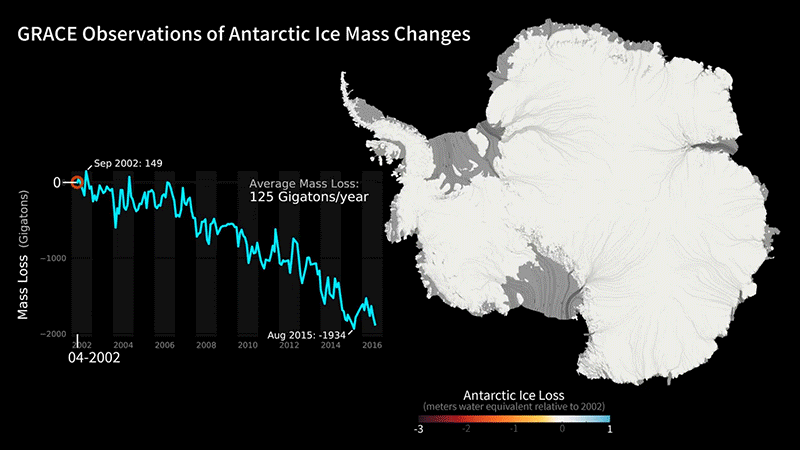21 April 2018
On Wednesday, +SpaceX successfully launched +NASA’s next-generation exoplanet-hunting space telescope, the Transiting Exoplanet Survey Satellite (TESS). It is capable of imaging an area 400x larger than that of Kepler and is expected to discover more than 20,000 exoplanets during its primary mission. The satellite will orbit the Earth every 13.7 days and cover 85% of the entire sky.
Like its predecessor, TESS will be searching for the phenomenon known as transit, where a planet passes in front of its star, causing a periodic and regular dip in the star ‘s brightness. Spectroscopy , the study of absorption and emission of light, will provide further information regarding the planet’s mass, density, and atmospheric composition.
Source: https://youtu.be/Q4KjvPIbgMI (+NASA Goddard)
Learn More: https://www.nasa.gov/content/about-tess (+NASA)
#ScienceGIF #Science #GIF #TESS #NASA #Exoplanet #Transiting #Survey #Satellite #Star #World #Planet #Astrophysics #Astronomy #Gravity #Camera #Sensor #Detector #FieldOfView #FOV #Sky #Observation #Kepler #Goddard
View Original Post on Google+
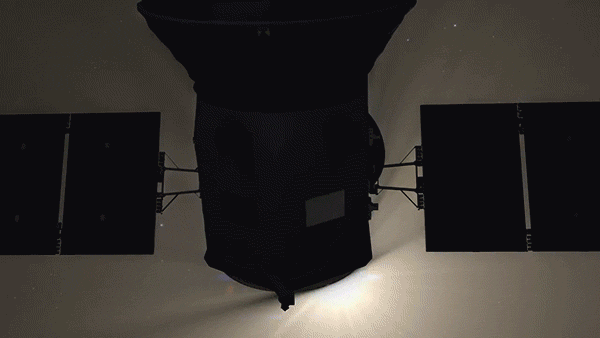
14 April 2018
Material scientists at the Lawrence Berkeley National Laboratory have developed a technique to print three-dimensional structures made entirely of liquids. Using a modified 3-D printer, they inject streams of surfactant-sheathed water into silicone oil to form tubes of liquid within another liquid. The threads of water have been printed with diameters ranging between 10µm to 1mm with a variety of spiraling and branching structures. The researchers hope to use the technique to construct liquid electronics, perform molecular separation, or precisely deliver components to more complex structures.
Source: http://newscenter.lbl.gov/2018/03/26/print-all-liquid-3-d-structures/
Journal Article: https://doi.org/10.1002/adma.201707603 ( Advanced Materials )
#ScienceGIF #Science #GIF #3D #Print #Liquid #Structures #Printer #Colloid #System #Nanoparticle #Polymer #Amphiphilic #Lawrence #Berkeley #LBNL #Material
View Original Post on Google+
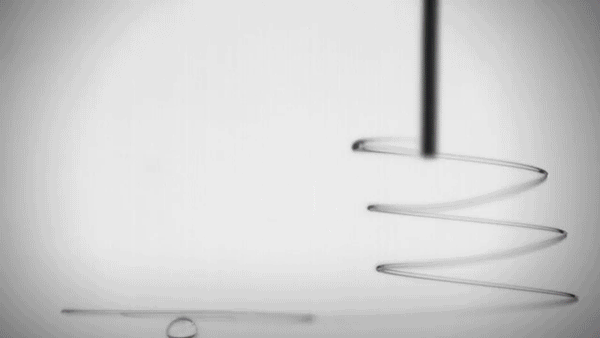
7 April 2018
Major advances in optical microscopy over the past decade have allowed for significant breakthroughs in the real-time 3D visualization of biological processes. First demonstrated in 1993, light sheet fluorescence microscopy (LSFM) uses perpendicular illumination of a sample with a light sheet , which is a beam of light focused only in one direction. This allows for the simultaneous illumination of an entire plane in the sample and a significant decrease in acquisition time compared to traditional raster-based techniques.
Lattice light sheet microscopy is an enhanced version of LSFM created in 2014 by Nobel Laureate Eric Betzig that offers even higher spatial and temporal resolutions with reduced photobleaching. The illuminating light sheets are spatially modulated to create 2D optical lattices, which are then scanned across the sample. This allows the technique to break the diffraction limit and achieve super-resolution imaging of living biological samples.
Here, a neutrophil (in green) expressing the fluorescent protein mCherry can be seen navigating through a collagen matrix (in orange) labeled with the fluorophore FITC.
Source: https://youtu.be/UmxKxpKua2M (HHMI)
Journal Article: https://goo.gl/JRuiu7 (Science)
#ScienceGIF #Science #GIF #Cell #Collagen #Matrix #Microscopy #Microscope #Light #Sheet #Lattice #Betzig #Janelia #HHMI #Biology #3D #Neutrophil #HL60 #mCherry #FITC #Optics #Imaging #Super #Resolution #Temporal #Spatial #Modulation #Technology
View Original Post on Google+
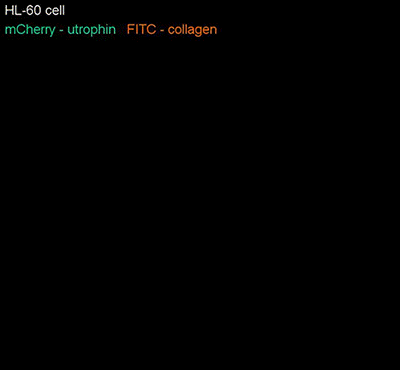
31 March 2018
Germination is the process by which a plant grows from a seed or similar structure. Initiation of germination is highly dependent upon internal and external conditions such as temperature, availability of water and oxygen, and sometimes light intensity. Many seeds remain dormant until the appropriate environmental conditions are attained in order to increase viability.
Here, a kidney bean can be seen growing over the course of 25 days in a soil cross-section. Beans are the seeds of legumes, which are flowering plants in the family Fabaceae. During the first week of growth, the subsurface root structure is established to increase the seedling ‘s access to nutrients and to provide support for the emergence of the stem. As the aboveground portion develops, significant motion can be seen as the plant grows towards light and nutrients through a process known as tropism.
Source: https://youtu.be/w77zPAtVTuI
#ScienceGIF #Science #GIF #Timelapse #Lapse #Time #Camera #Bean #Seed #KidneyBean #Kidney #Sprout #Roots #Stalk #Germination #Plant #Soil #CrossSection #Biology
View Original Post on Google+
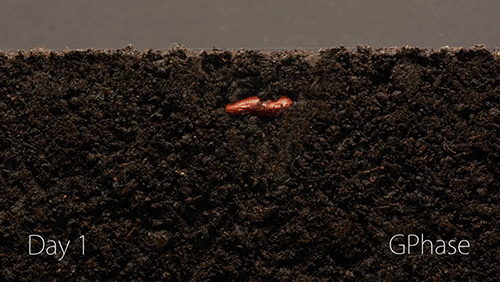
24 March 2018
Optical illusions are distortions in our visual system characterized by a perception that appears to differ from reality. There are three major types of optical illusions: physical, physiological, and cognitive. Physical illusions are caused by the physical environment, such as refraction making a spoon immersed in water appear to bend. Physiological illusions arise in the eye or the visual pathway and can be caused by excessive stimulation of receptors (e.g. afterimage after seeing a camera flash). Cognitive illusions , such as the one below, are the result of unconscious inferences based on assumptions about how the world should look and are the most widely known type of optical illusion.
The popular Müller-Lyer Illusion consists of equal length line segments with variable fin orientations, which causes the brain to misinterpret the actual length of the line segment. A complex example of this optical illusion is shown in the animation below. Despite the blue and black line segments remaining static, the context provided by the fin positions tricks our brain into interpreting it as changes in line segment length.
There are two hypotheses for how exactly this cognitive optical illusion manifests. The first relies upon our ability to judge depth based on perspective. The fins are misinterpreted by the brain as depth cues, which results in an erroneous assumption of a 3D scene. The second relies upon how the brain computes perceived location using the centroid of an object’s luminance. The orientation of the fins causes a shift in the centroid and results in a misjudgement of distance.
Source: https://www.giannisarcone.com/Muller_lyer_illusion.html
#ScienceGIF #Science #GIF #Optical #Illusion #Muller #Lyer #Arrow #Pulsating #Star #Segment #Radial #Sociology
View Original Post on Google+
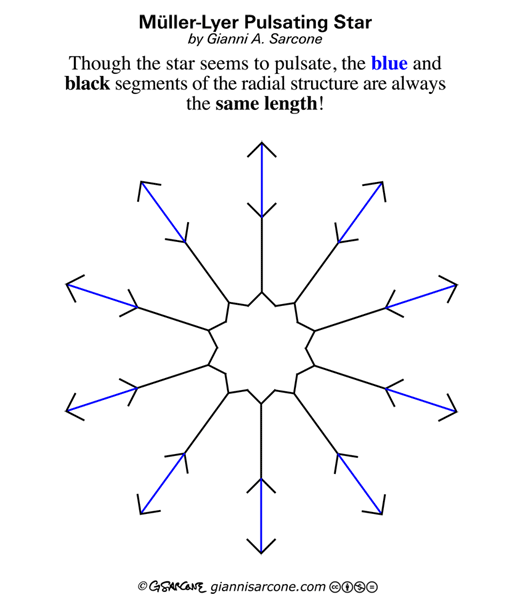
17 March 2018
Sodium Borohydride (NaBH4) is a broadly used reducing agent most commonly found as a white powder. Tin Tetrachloride (SnCl4) is a colorless hygroscopic liquid, which fumes on contact with air, and is predominantly used in organotin chemistry. It was also used as a chemical weapon during World War I to form irritating, dense smoke on the battlefield.
The exothermic reaction between aqueous NaBH4 and SnCl4 involves the borohydride reducing the Tin(IV) to Tin metal, forming BH3 and H2 gas in the process.
Source: https://youtube.com/chemicalforce
#ScienceGIF #Science #GIF #Chemical #Reaction #Rxn #Chemistry #Sodium #Borohydride #Aqueous #Tin #Tetrachloride #Powder #Solution #Air #Smoke #Reducing #Reduction
View Original Post on Google+
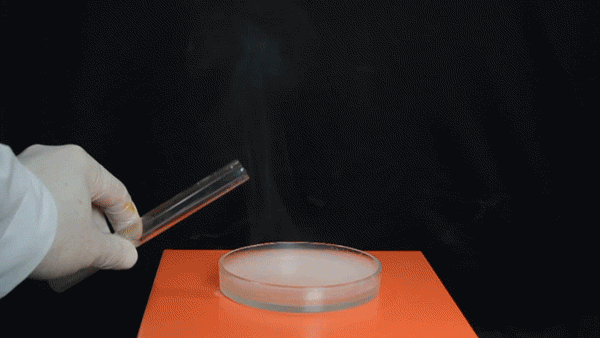
10 March 2018
The high spatial and temporal coherence of lasers allows them to be precisely focused into small spots, making them ideal for optical cutting and lithography applications. While most people are familiar with continuous wave (CW) lasers that constantly emit the same amount of light, pulsed lasers can be used to achieve significantly higher peak power by emitting discrete pulses of light.
Here a pulsed near-infrared laser can be seen engraving a metal plate with a complex design in real time. A preliminary red laser (635 nm) is used to validate the positioning of the pattern on the surface before the primary laser (1064 nm) begins the engraving process.
Source: https://youtu.be/iKTR9bl-T00 (Z-Tech)
#ScienceGIF #Science #GIF #Laser #Engraving #Engrave #Light #Pulse
View Original Post on Google+
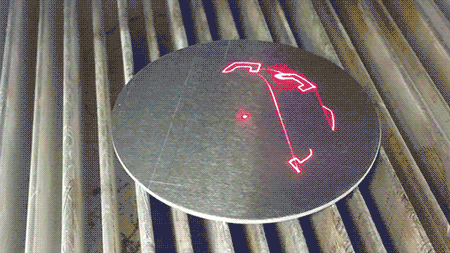
3 March 2018
On March 1st, +NASA and NOAA successfully launched GOES-S , the second in a new series of four highly advanced geostationary weather satellites. Once positioned in its final orbit, the satellite will be renamed GOES-West and provide coverage of the American continent and much of the Pacific Ocean.
GOES-East captured the launch of GOES-S from Cape Canaveral as visualized here across several imaging bands. The water vapor trail left behind by the Atlas V rocket can be clearly seen across the high-, mid-, and low-level tropospheric water vapor channels as well as the cirrus cloud channel.
The new generation of GOES is capable of viewing the Earth across 16 spectral bands and provides 4x the spatial resolution and more than 5x faster coverage than its predecessor. The satellites also contain instrumentation for mapping lightning on Earth, imaging the ultraviolet spectrum of the Sun, measuring solar emissions, and tracking the outer magnetosphere of the planet.
Source: https://col.st/j62Fp (CIRA/RAMMB)
#ScienceGIF #Science #GIF #GOES #Geostationary #Environment #Satellite #NASA #NOAA #Florida #Cape #Canaveral #Launch #Vapor #Band #Cirrus #Tropospheric #Water #Imagery #Timelapse #Imaging
View Original Post on Google+
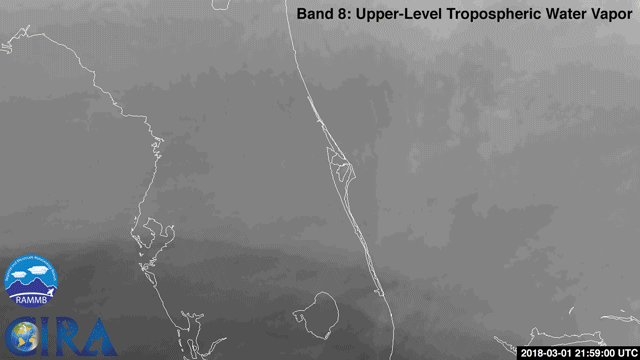
24 February 2018
Gyrification is the developmental process that forms the characteristic folds of the cerebral cortex in the brain. It allows for increased cortical surface area and therefore greater cognitive functionality within a smaller space. Studying the wrinkling and folding of brain tissue during development is critical for providing a better understanding of the brain and various disorders.
Scientists have created human brain organoids on-a-chip to study the physics of brain wrinkling. These small compartments allow for in situ fluorescent imaging of stem cells as they develop over the course of weeks. As the organoid grows, convolutions begin to emerge in the cellular structure. The results reported in Nature Physics suggest that mechanical instabilities drive the wrinkling process as the outer regions of the organoid exhibit increased growth while the inner surface contracts.
Source: https://goo.gl/qnPSa1 (Nature Physics)
#ScienceGIF #Science #GIF #Brain #Chip #Tissue #Stem #Cells #Organoid #Wrinkle #Neurodevelopment #Physics #Biology #Fluorescence #Microscopy #Timelapse #Cortex #Division #Development #Progenitor
View Original Post on Google+
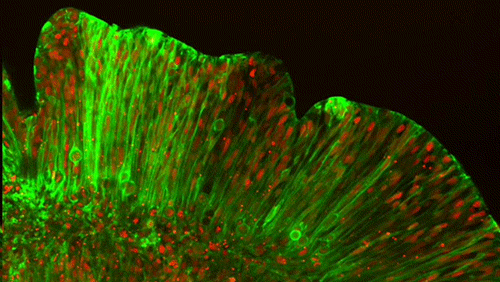
18 February 2018
The Gravity Recovery and Climate Experiment (GRACE) was a joint mission between NASA and the German Aerospace Center that studied anomalies in the Earth’s gravity field between 2002 and 2016. The instrument was comprised of a pair of satellites in polar orbit 500 km above the surface of the Earth. The system was capable of detecting 10 µm changes in the separation of the two satellites caused by subtle changes in the Earth’s gravity.
Over the course of its 14-year mission, GRACE measured gravitational changes in Antarctica corresponding to the loss of 125 gigatons of ice per year. The volume lost was estimated to have caused the global sea level to rise by 0.35 mm annually. This animation depicts the spatial distribution of ice loss, particularly in the West Antarctic Ice Sheet, over the entire GRACE mission.
The system was decommissioned in October 2017 with the GRACE-2 satellite re-entering the atmosphere on December 24, 2017, and GRACE-1 scheduled for late February 2018. The successor, GRACE-FO, is scheduled to launch in early 2018.
Source: https://goo.gl/Z8RkkT (NASA JPL)
#ScienceGIF #Science #GIF #Antarctica #Antarctic #Ice #Loss #GRACE #Satellite #Observations #Mass #Melt #Ton #Climate #ClimateChange #GlobalWarming #Global #Warming #NASA #JPL
View Original Post on Google+
